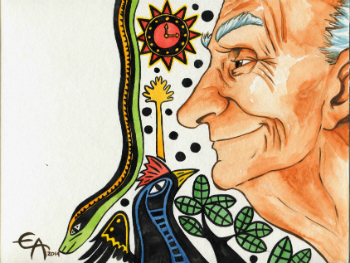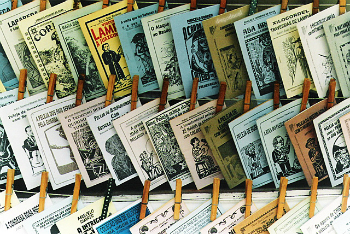The armorial movement, which emerged in the 1970s in Brazil, was an artistic-cultural aspect of valuing popular arts in the Northeast.
The central objective was to create a unique Brazilian art based on popular roots.
Idealized by the Paraiban writer Ariano Suassuna, this event covered literature, music, dance, theater, plastic arts, architecture, cinema, etc.

Origin of the Movement
From 1969 to 1974, Suassuna served as Director of the Department of Cultural Extension at the Federal University of Pernambuco (UFPE).
It was with the support of this Department that Suassuna, along with other artists, created the armorial movement on October 18, 1970.
On the occasion, held at the Church of S. Pedro dos Clérigos in the center of the city of Recife, there was an exhibition of popular arts and a concert.
The central idea of the movement was to create a classical art from popular elements. In this perspective, the northeastern hinterland is valued through the wealth of cultural and artistic values.
Although it started in the academic field, the movement has expanded. Subsequently, it received support from the Recife City Hall and the Pernambuco State Department of Education.
In the words of Ariano Suassuna:
“ The Brazilian Armorial Art is that whose main common feature is the connection with the magical spirit of the” brochures “of Romanceiro Popular do Nordeste (Cordel Literature), with the music of viola, fiddle or fife that accompanies their” songs “, and with the woodcut that illustrates its covers, as well as with the spirit and form of the Arts and popular shows related to this same Romanceiro . ” (Jornal de Semana, May 20, 1975)
Literature of twine

The string literature , important literary manifestation typical of the Northeast, was a driving element for the consolidation of armorial movement.
With simple and uncompromising language, cordel literature explores everyday and popular themes.
Furthermore, this regional literary genre departs from literary canons as it is marketed in leaflets hanging from a rope (hence its name “cordel”).
It is important to highlight that this literary manifestation brings together other artistic forms, such as music and woodcut.
This is because cordel literature is usually sold by writers themselves at popular fairs.
One way to sell your product is to sing the verses. In addition, the brochures are illustrated with woodcuts.
Thus, by bringing together several artistic manifestations in one, cordel literature was a fundamental element of valuing Brazilian popular art.
Note that in addition to it, many other popular manifestations gained strength with the armorial movement. Folklore, popular parties and dances, viola fashion, popular street and doll theater, among others, stand out.
Top Artists

Woodcut by Gilvan Samico, an expression of the Armorial Movement
Some artists who stood out in the armorial movement were:
- Ariano Suassuna (1927-2014): creator of the movement and writer from Paraíba.
- Francisco Brennand (1927): plastic artist and ceramist from Pernambuco.
- Gilvan Samico (1928-2013): printmaker, draftsman and painter from Pernambuco.
- Raimundo Carrero (1947): journalist and writer from Pernambuco.
- Antônio Madureira (1949): musician and composer from Rio Grande do Sul.
- Antônio Nóbrega (1952): artist and musician from Pernambuco.
